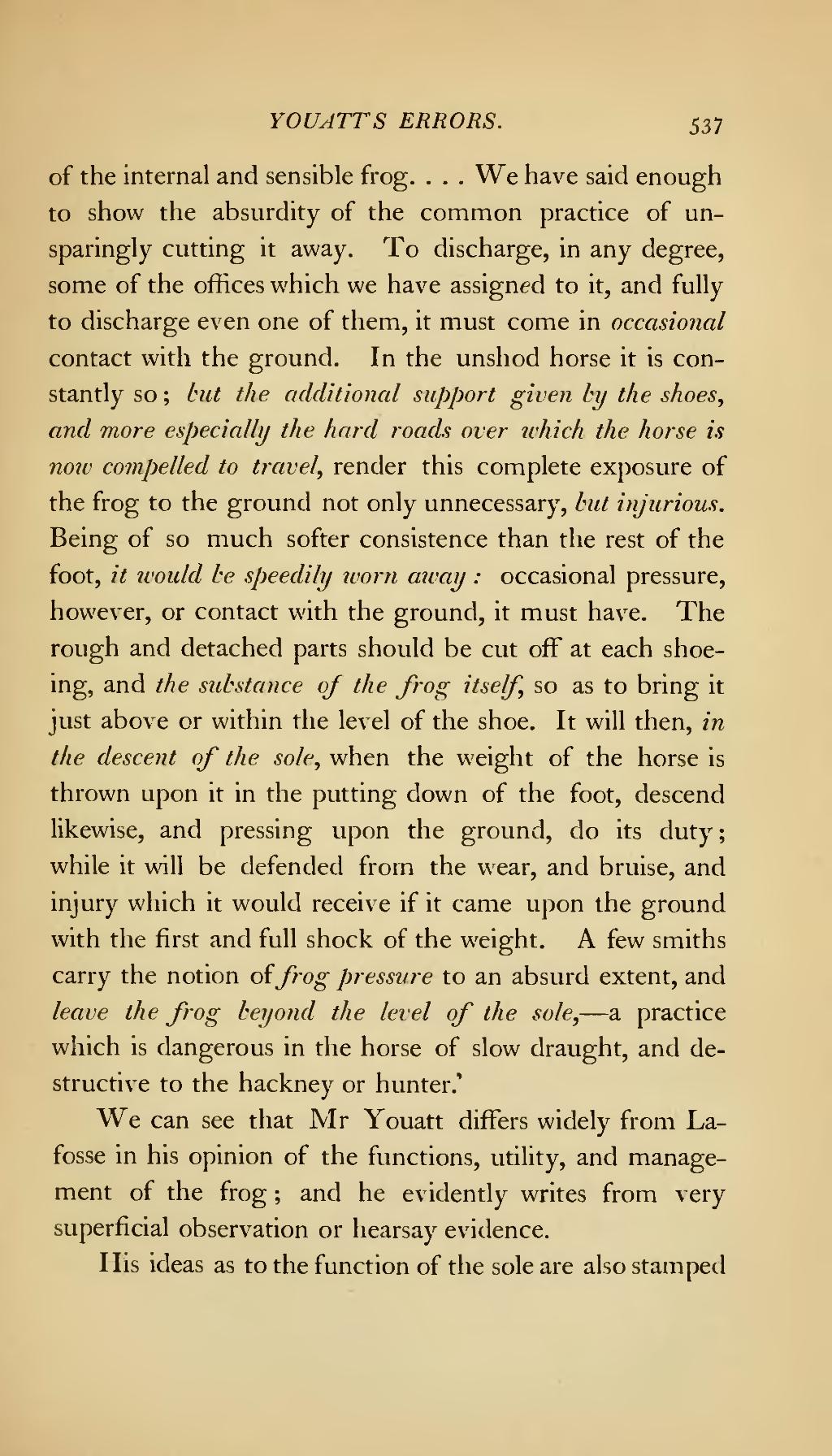of the internal and sensible frog. . . . We have said enough to show the absurdity of the common practice of unsparingly cutting it away. To discharge, in any degree, some of the offices which we have assigned to it, and fully to discharge even one of them, it must come in occasional contact with the ground. In the unshod horse it is constantly so; but the additional support given by the shoes, and more especially the hard roads over which the horse is now compelled to travel, render this complete exposure of the frog to the ground not only unnecessary, but injurious. Being of so much softer consistence than the rest of the foot, it would be speedily worn away: occasional pressure, however, or contact with the ground, it must have. The rough and detached parts should be cut off at each shoeing, and the substance of the frog itself, so as to bring it just above or within the level of the shoe. It will then, in the descent of the sole, when the weight of the horse is thrown upon it in the putting down of the foot, descend likewise, and pressing upon the ground, do its duty; while it will be defended from the wear, and bruise, and injury which it would receive if it came upon the ground with the first and full shock of the weight. A few smiths carry the notion of frog pressure to an absurd extent, and leave the frog beyond the level of the sole,—a practice which is dangerous in the horse of slow draught, and destructive to the hackney or hunter.'
We can see that Mr Youatt differs widely from Lafosse in his opinion of the functions, utility, and management of the frog; and he evidently writes from very superficial observation or hearsay evidence.
His ideas as to the function of the sole are also stamped
